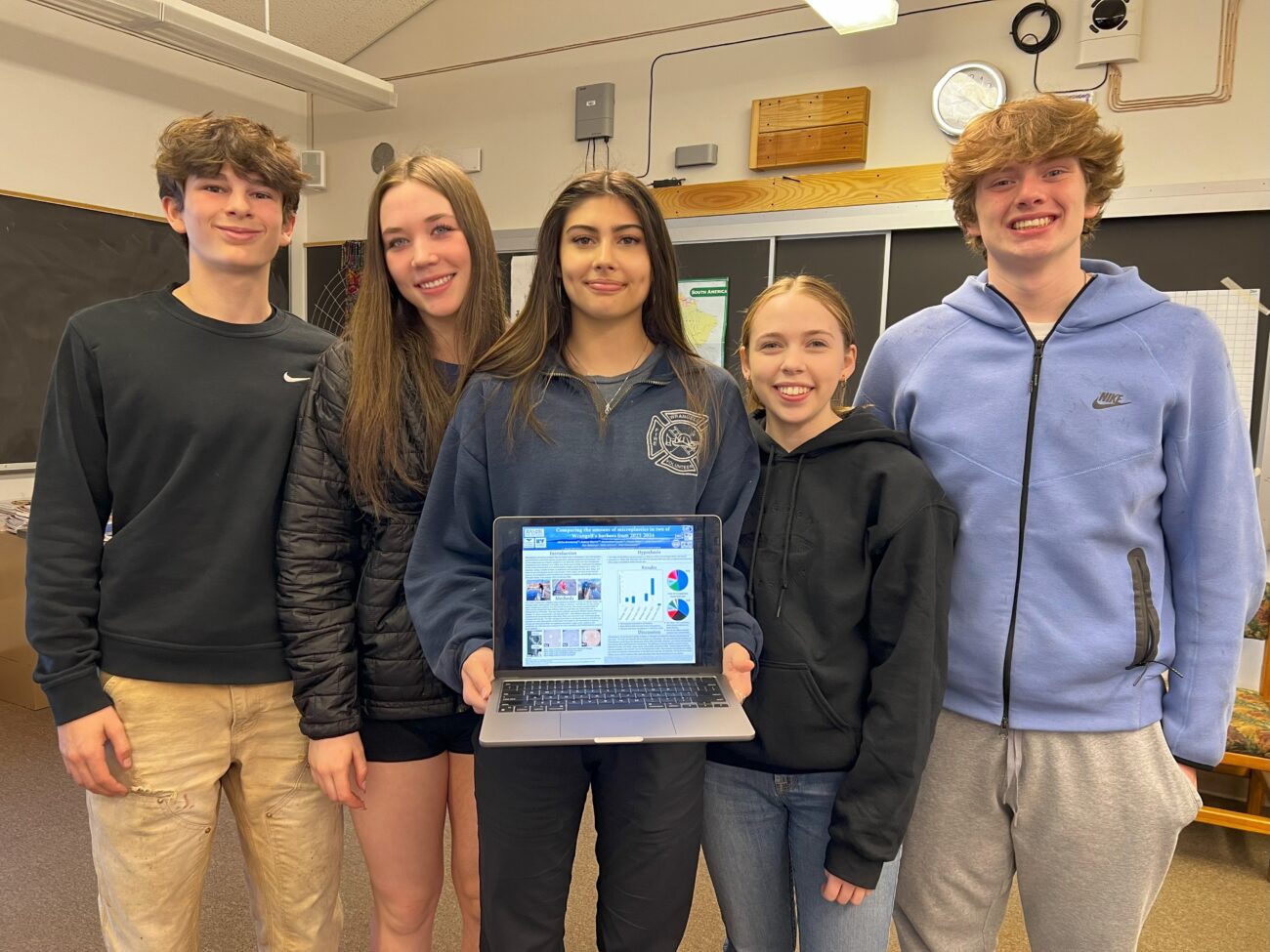
Senior Alisha Armstrong and her classmates compared microplastics in two of Wrangell’s harbors by collecting water samples from Reliance Float and Heritage Harbor.
All five students compared the numbers to results from the year before. They thought that microfibers and microplastics would be consistent with the 2023 data that last year’s students tested because boat usage and the population remained the same over the year.
“They did this project last year and our main topic was to see if the microplastic count has risen since last year,” Armstrong said. “Our data showed that it actually did.”
In fact, it increased by a lot. The amount of microplastics increased by about 50% at Heritage Harbor and nearly 200% at Reliance Float.
The Southeast Alaska program Rural Alaska Students in One-Health Research (RASOR) supported the Wrangell experiment. They presented their scientific research poster at the American Indian Scientific and Engineering Society’s Regional (AISES) Fair online. Students from multiple communities presented twenty-one different projects on April 30. Wrangell’s students were awarded “The Environmental Science & Sustainability Award, representing Haa Aani, Protecting and Honoring our Land”. The project also landed the students third place in the regional competition.
Microplastics and fishing
Della Churchill, who is a junior, said they considered several topics to research.
“We looked at doing shellfish toxins and crab larvae and looking at green crabs,” she said.
But they chose to test microplastics in the water because they had recent data and it was the most interesting to the group.
Junior Aubrey Wynne said that microplastics affect one of the main industries in Southeast Alaska.
“Having large amounts of microplastics in our ocean would affect our fishing industry and we rely heavily on that,” she said. “It’s kind of what makes Wrangell Wrangell and same thing all throughout Southeast.”
“I may be more excited than they were”
Science teacher, Heather Howe, said she found out about the group receiving the two awards through a Zoom call at the beginning of one of her classes. She’s been facilitating the local RASOR program since 2020 and was shocked by the news.
“I literally got up from my desk and ran down the hallway, ran into Boomchain’s room, he was in the math room, and I’m like, ‘Boomchain! You guys won!’,” she said. “I sprinted to the office and told Aubrey and Della the same thing, because they happen to be in there.”
The recognition allows them to present their research on the national level at the AISES National Conference. It takes place in October in San Antonio, Texas.
“I may be more excited than they were,” Howe said. “I was thrilled.”
The Wrangell students aren’t sure if they’ll present their research at the conference though. Armstrong will be graduating this year and the other students are committed to sports during the fall. Presenting remotely isn’t an option, so they’ll have to work out the details.
The RASOR program is available to high school sophomores, juniors and seniors in most Southeast Alaska communities. It’s developed by the University of Alaska Fairbanks and is based out of Sitka.











